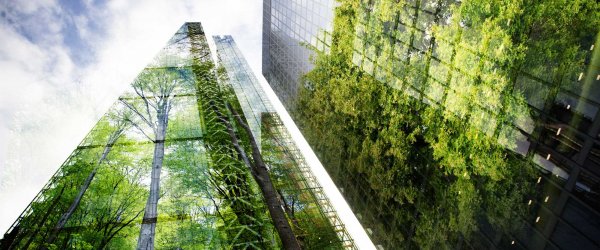GREEN BUILDING INVESTMENTS CONTINUE STRONG PERFORMANCE
-
The share of certified green buildings in Germany’s commercial real estate investment market (excl. portfolios) remains quite high, even in a challenging market environment. The segment accounted for around 27% in 2023 after posting an outstanding 31% in 2022. This is the second-best result in the past 10 years and highlights the significance of green investments.
-
Although the green building investment market was unable to escape the general downward trend with €4.7bn in transaction volume (-57% vs. 2022), it did prove relatively stable compared to the overall market. Given the extensive slowdown, particularly in the high-volume office segment (-87% for deals of €100m or more), which has always played a key role in green investment, a sharper decline would not have come as a surprise.
-
Sustainability and ESG continue to be regarded as a moving target in parts of the real estate industry. For example, the taxonomy requirements and the PAI (principal adverse impact) criteria set forth in the EU Disclosure Regulation are ambiguous, and the latest CRREM update has turned many buildings that were making good progress along the path to decarbonisation into candidates for stranded assets. There are still not enough clear criteria that define what sustainable investment means.
-
Green building certificates are among the few criteria that provide orientation. Investors appreciate the certainty and reliability that green investments offer, and their market share is correspondingly high.
INVESTORS FORCUS ON SUSTAINABILITY
-
The transaction volume of properties with green building certification has dropped considerably over the past two years in the wake of the general downturn on the commercial real estate investment market.
-
However, the market share of green investment in single-asset deals remained quite high at 27.1% after reaching a temporary peak of 30.6% in 2022.
-
In 2023, it was again institutional core investors who put most of their real estate investment capital in green buildings.
-
The share in green investments generated by open-ended funds, insurance companies and pension funds came to well over 50% in some cases.
-
In absolute terms, investment/asset managers poured roughly €930m into green buildings, followed by corporates (around €750m) and special funds (around €660m).
OFFICE REMAINS DOMINANT ASSET CLASS
-
The ongoing dominance of office assets in Germany’s investment market came to a halt in 2023. In terms of portfolio and single-asset deals, logistics, office and retail were almost on par, with market shares between 24% and 26%. Office (33.4%) only manages to heavily outperform logistics (22.3%) when it came to single-asset deals.
-
Office (44%) continued to lead the pack around green investments, although logistics (27%) and retail (21%) did post new record highs in 2023.
-
The importance of certification is growing across all asset classes. Green buildings accounted for more than 30% of transaction volume across all four main usage types for the first time in 2023.
-
The office segment proved a temporary exception to this trend, with the share of green investment down from 46% to 36% in 2023 due to the lack of large core deals in the CBDs of tier-1 cities.
TIER-2 LOCATIONS CATCH UP IN GREEN BUILDINGS MARKET
-
While roughly 80% of capital poured into certified green buildings targeted assets in tier-1 cities in 2022, this number only came to 59% in 2023.
-
Driven by high-volume deals (e.g. Beam and Mynd), the share of green buildings in total transaction volume in Berlin came to a strong 60%. Germany’s other tier-1 cities posted a share far below their long-term average. The lack of high-volume (office) transactions was the key driver here. This trend was particularly striking in Frankfurt, which saw its share drop to 6%.
